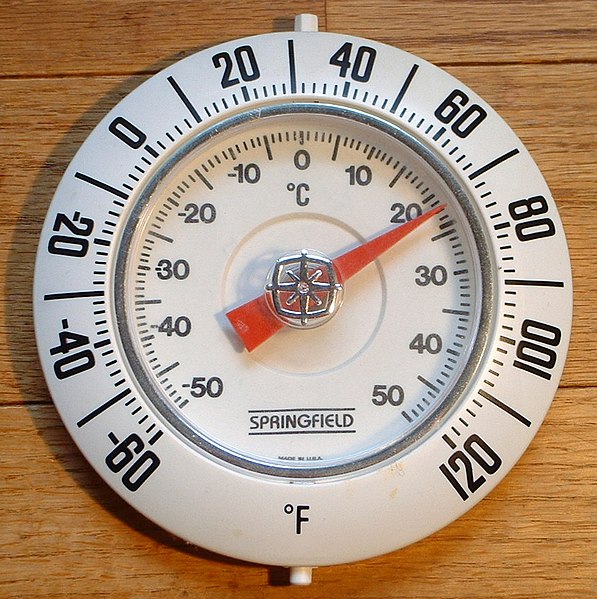The Fahrenheit scale is a temperature scale based on one proposed in 1724 by the European physicist Daniel Gabriel Fahrenheit (1686–1736). It uses the degree Fahrenheit as the unit. Several accounts of how he originally defined his scale exist, but the original paper suggests the lower defining point, 0 °F, was established as the freezing temperature of a solution of brine made from a mixture of water, ice, and ammonium chloride. The other limit established was his best estimate of the average human body temperature, originally set at 90 °F, then 96 °F.
Thermometer with Fahrenheit (marked on outer bezel) and Celsius (marked on inner dial) degree units.
Daniel Gabriel Fahrenheit
Daniel Gabriel Fahrenheit FRS was a physicist, inventor, and scientific instrument maker, born in Poland to a family of German extraction. Fahrenheit invented thermometers accurate and consistent enough to allow the comparison of temperature measurements between different observers using different instruments. Fahrenheit is also credited with inventing mercury-in-glass thermometers more accurate and superior to spirit-filled thermometers at the time. The popularity of his thermometers led to the widespread adoption of his Fahrenheit scale attached to his instruments.
Daniel Gabriel Fahrenheit
House where Gabriel Fahrenheit died in 1736, at Plein square, The Hague



